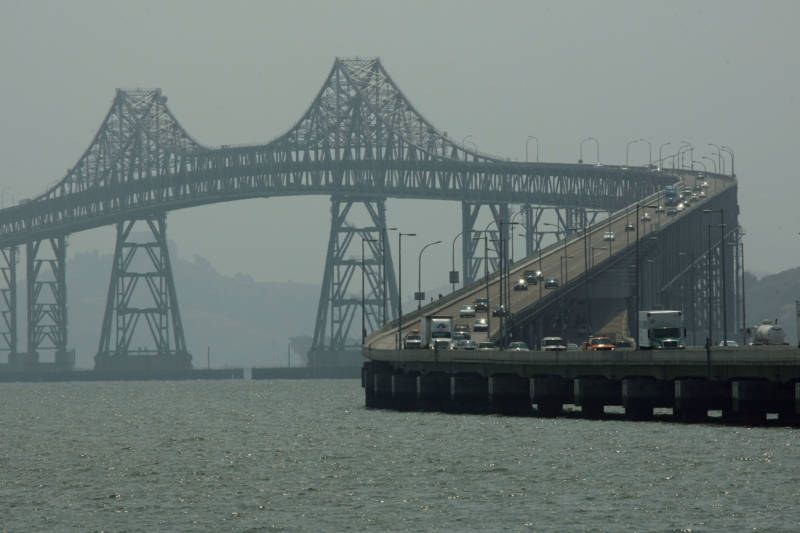The span remained closed most of the day as pieces of concrete continued to fall from the underside of the upper deck and shatter on the lower roadway. It reopened briefly in the afternoon, but was almost immediately shut down again as the concrete fall resumed.
The closure's impact was felt all over the central Bay Area, with epic gridlock prevailing, for instance, in downtown San Francisco.
Traffic finally resumed its normal flow in both directions about 8 p.m. Thursday after crews installed a steel plate over the damaged expansion joint and placed plywood on the underside of the upper deck to prevent any further concrete drops.
Tavares said engineers currently believe the expansion joint failed and concrete began falling because of an especially heavy traffic load Thursday morning coupled with normal wear and tear. The joint is designed to help the roadway accommodate the constant vibrations the bridge experiences as well as the structure's expansion and contraction as it heats and cools.
Tavares used the briefing to try to ease concerns about the bridge's condition.
"The bridge is safe," Tavares said. "... The structural integrity of the bridge is sound."
He said the joint that failed — and the rest of the bridge — had undergone an inspection last August that found no problems. He described Caltrans' bridge inspections as "robust."
Reporters pressed Tavares about whether he was concerned that the joint failed just six months after it was inspected and whether the episode suggested the transportation agency should do something more.
"We are doing everything to the best of our abilities," Tavares responded, adding that every element of the bridge structure undergoes regular examinations.
"We go through the entire bridge very carefully," he said.
But he added that the 63-year-old bridge, like other transportation infrastructure around the state, might be showing its age.
"It's an old bridge," he said. Asked how long the bridge could be expected to continue in service, he said, "I would assume it should still be viable for another 10, 20 years, if not longer."

